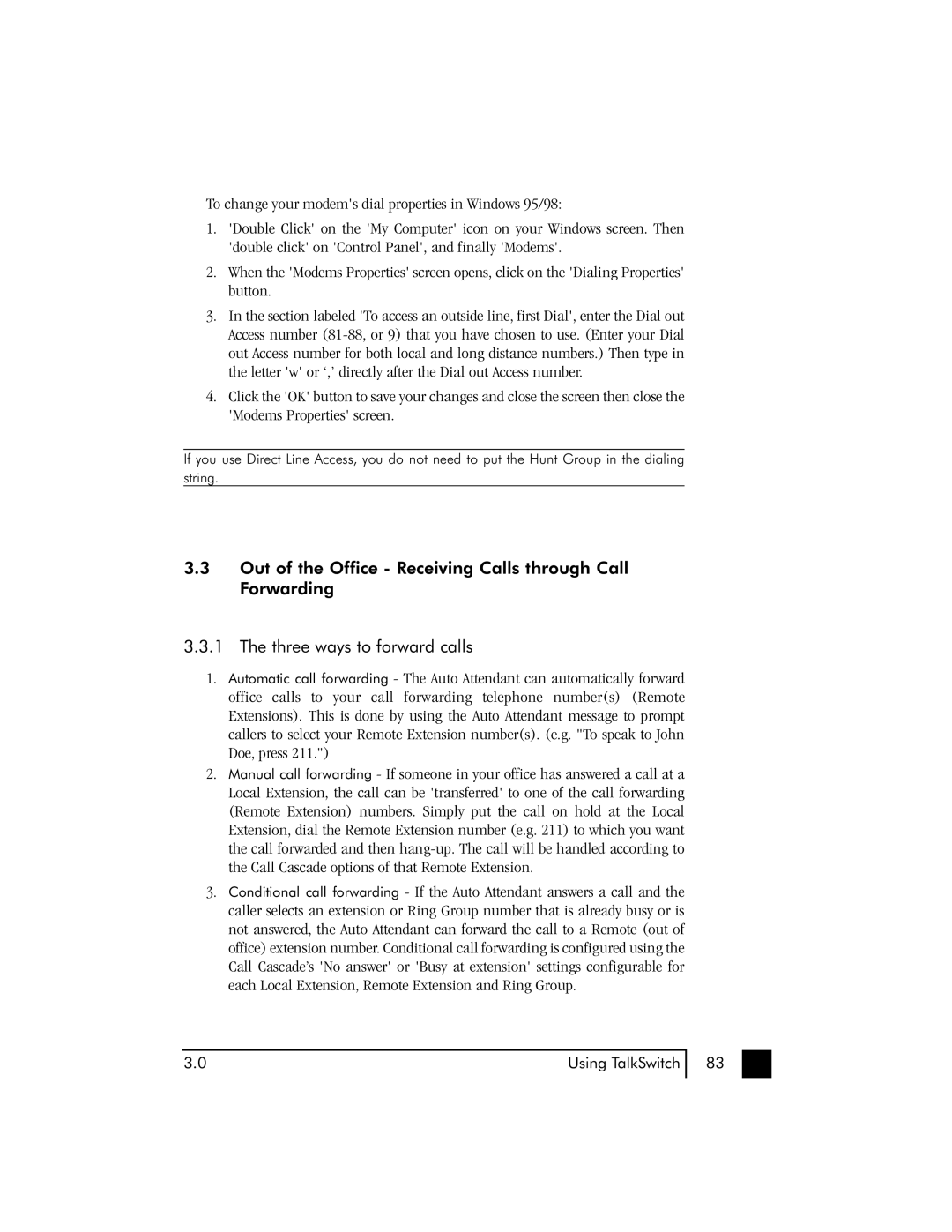
To change your modem's dial properties in Windows 95/98:
1.'Double Click' on the 'My Computer' icon on your Windows screen. Then 'double click' on 'Control Panel', and finally 'Modems'.
2.When the 'Modems Properties' screen opens, click on the 'Dialing Properties' button.
3.In the section labeled 'To access an outside line, first Dial', enter the Dial out Access number
4.Click the 'OK' button to save your changes and close the screen then close the 'Modems Properties' screen.
If you use Direct Line Access, you do not need to put the Hunt Group in the dialing string.
3.3Out of the Office - Receiving Calls through Call Forwarding
3.3.1 The three ways to forward calls
1.Automatic call forwarding - The Auto Attendant can automatically forward office calls to your call forwarding telephone number(s) (Remote Extensions). This is done by using the Auto Attendant message to prompt callers to select your Remote Extension number(s). (e.g. "To speak to John Doe, press 211.")
2.Manual call forwarding - If someone in your office has answered a call at a Local Extension, the call can be 'transferred' to one of the call forwarding (Remote Extension) numbers. Simply put the call on hold at the Local Extension, dial the Remote Extension number (e.g. 211) to which you want the call forwarded and then
3.Conditional call forwarding - If the Auto Attendant answers a call and the caller selects an extension or Ring Group number that is already busy or is not answered, the Auto Attendant can forward the call to a Remote (out of office) extension number. Conditional call forwarding is configured using the Call Cascade’s 'No answer' or 'Busy at extension' settings configurable for each Local Extension, Remote Extension and Ring Group.
3.0 | Using TalkSwitch |
83
